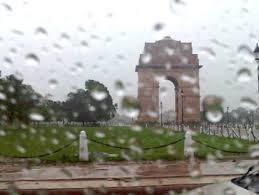 The India Meteorological Department lowered its forecast for 2015 southwest monsoon from 93 per cent of the LPA to 88 per cent, triggering concerns all around.
The India Meteorological Department lowered its forecast for 2015 southwest monsoon from 93 per cent of the LPA to 88 per cent, triggering concerns all around.
Agriculture minister Radha Mohan Singh (photographed below) tells Business Standard that the Centre is well prepared to tackle any eventuality.
Edited excerpts:
IMD’s revised forecast means rainfall this year could be deficient. How do you see this?
We are taking stock and I have directed my officers to give updated reports on the preparations.
In fact, immediately after the April forecast, my officers held discussions with
state officials to understand the situation.
We had prepared a contingency plan for 580 districts.
Now that the forecast has been lowered further, I have directed updated plans.
Officials are also talking to agencies like the Central Research Institute for Dryland Agriculture.
I will also hold discussion with IMD.
But, we are better prepared this time than last year to deal with uneven rain.
Last year, too, IMD had lowered its forecast during this time of the year.
Though IMD lowered its monsoon forecast, a private weather company, Skymet, has stuck to its forecast of normal rain.
IMD is the official weather forecasting agency of the government and its forecasts have been largely correct in the past few years.
Recent data showed that growth of agriculture and allied sectors had dropped from 3.7 per cent in 2013-14 to 0.2 per cent in 2014-15. In fact, production fell in the third and fourth quarters. Is this a worrying sign?
It is correct that growth was negative in the third and fourth quarters of 2014-15, due to the uneven monsoon and uncertain rain during the rabi season.
But, if you look at the gross value added in agriculture and allied activities, it has grown.
In 2012-13, it was Rs 15,23,470 crore (Rs 15,234.7 billion), adjusted for inflation, which rose to Rs 15,79,290 crore (Rs 15,792.9 billion) in 2013-14; in 2014-15, it was Rs 15,82,851 crore (Rs 15,828.51 billion).
This came mainly due to the fisheries and livestock sector, which has grown faster than crops.
Will this trend continue in the coming year?
I definitely believe so and it will come mainly from fisheries and livestock. Our initiatives like the ‘Gokul Mission’ and ‘Blue Revolution’ will aid this.
In the past year, agriculture has been in a lot of focus. What, according to you, stands out among these?
We have taken a lot of initiatives.
When I came into this ministry, only Rs 72 crore (Rs 720 million) was spent (in a year) on soil testing and there were 13 mobile soil testing labs.
We e-sanctioned Rs 80 crore (Rs 800 million) in the first year itself and started almost 100 mobile soil testing labs.
Then, we embarked on a massive scheme to give soil health cards to all the 130-plus million farmer families.
For this, over Rs 500 crore (Rs 5 billion) was sanctioned for three years, of which we have given about Rs 200 crore (Rs 2 billion) to states in 2014-15.
Another big initiative was on organic farming. We sanctioned Rs 300 crore (Rs 3 billion) for it, with a special focus on the northeast states.
The entire focus has been on lowering the cost of production for farmers through less use of fertiliser, while increasing the value of their output.











 © 2025 Rediff.com -
© 2025 Rediff.com -